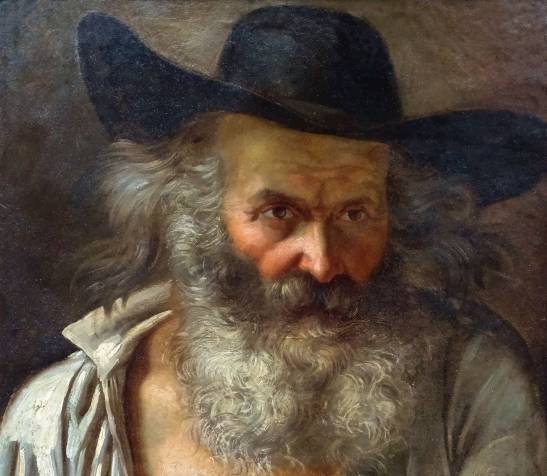Two hundred years after it was painted, the portrait of a mental patient from the 19th century, an unpublished painting by the artist of French Romanticism, Theodore Géricaultauthor of “A jangada da Medusa”, left anonymity.
The painting belongs to a series of ten portraits known as “monomanias” and of which only five were known until now, until last year the researcher at the Universitat Jaume I, Javier S. Burgos, identified the sixth: melancholic religious, identified in a Italian private collection.
“There are several aspects that relate to the series. Obviously the composition of the painting, but also the color palette, the type of brush strokes or the dimensions. But what was definitive was the label that indicated that it was a patient painted by Géricault”, tells S. Burgos to SINC.
This label reads: “This portrait of a madman painted by Géricault was given to me by the widow of D. Maréchal on November 9, 1866, in Paris.”
The finding was published in a letter in the ‘Correspondence’ section of the journal The Lancet Neurologywhich also echoed the previous discovery of the neurobiologist in 2021.
There are several aspects that relate to the series. Obviously the composition of the painting, but also the color palette, the type of brush strokes or the dimensions. But what is definitive is the label indicating that he was a patient painted by Géricault.
This seventh portrait represents a drunk monomaniac, a type of mental illness, according to psychiatrists at the time. In this way, drunkenness is added to the other six known monomanias: envy, obsessive fixation, gambling, kleptomania, child abduction and religious melancholy.
“At that time there were different types of purges and methods, none of them effective. We must keep in mind that we are at the beginning of modern psychiatry and this is the moment when patients begin to be treated as sick and not as possessed”, highlights the scientist.
This second hidden painting belonged to a private collection and had been deposited in a small Parisian gallery for two years.
Mental patients in 19th century Paris
Théodore Géricault painted the famous series of ten portraits of mentally ill patients interned in Parisian psychiatric hospitals around 1823. Of these ten portraits, five have been preserved, exhibited in world-class museums.
It is believed that the reasons that led him to paint the paintings, which reflect much different forms of ‘madness’They were for therapeutic purposes. Doctor Georget treated him after he suffered from depression in 1819, but it is also suggested that he was commissioned by the doctor to the cured artist, to illustrate different psychiatric disorders.
If two were found, the others can be found. At the moment we don’t know which other monomanias are missing, but I believe they can be identified once we find them.
Of the other five known portraits, their existence was known from a letter published in 1863 by a famous art dealer, who is said to have found them in an attic in Baden-Baden.
With this discovery, two of the five lost paintings come to light, and further progress is made in identifying the complete series. In fact, the Spanish researcher is now continuing with the investigations to complete the series.
“If two were found, the others can be found. At the moment we don’t know that other monomanias are missing, but I trust that they can be identified as soon as we find them”, concludes S. Burgos.
Reference:
Javier S Burgos. “Monomania of Drunkenness by Géricault”. The Lancet Neurology
